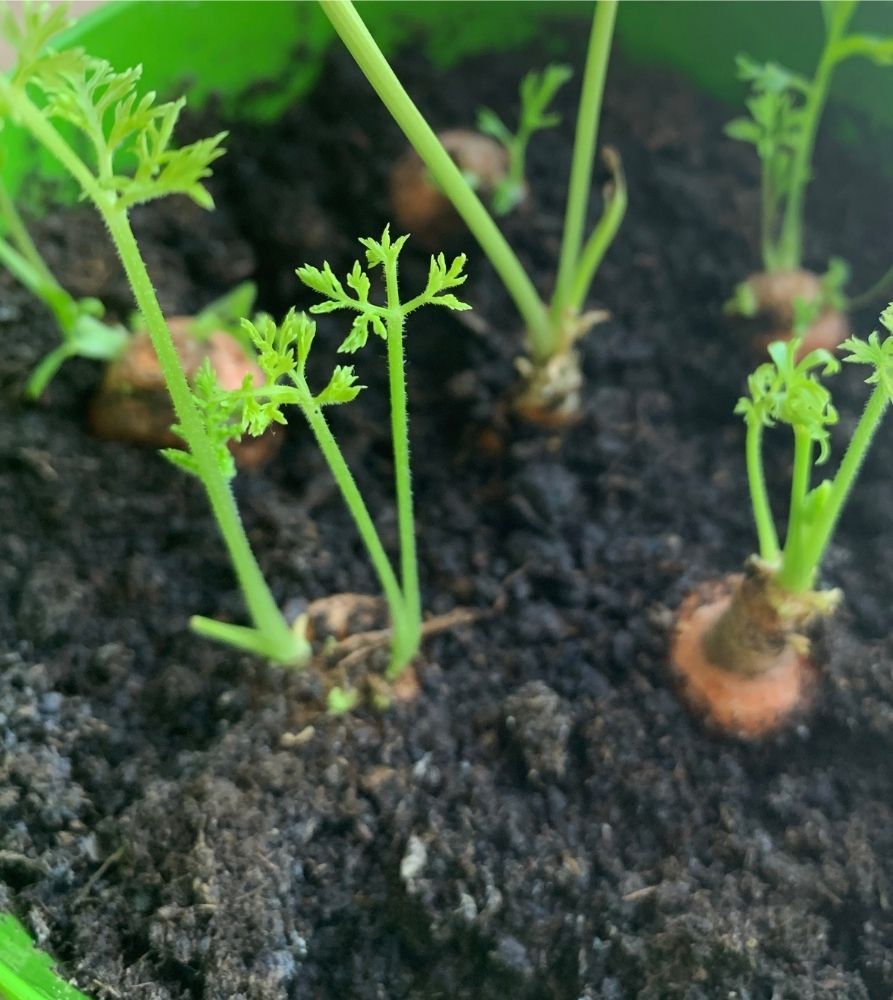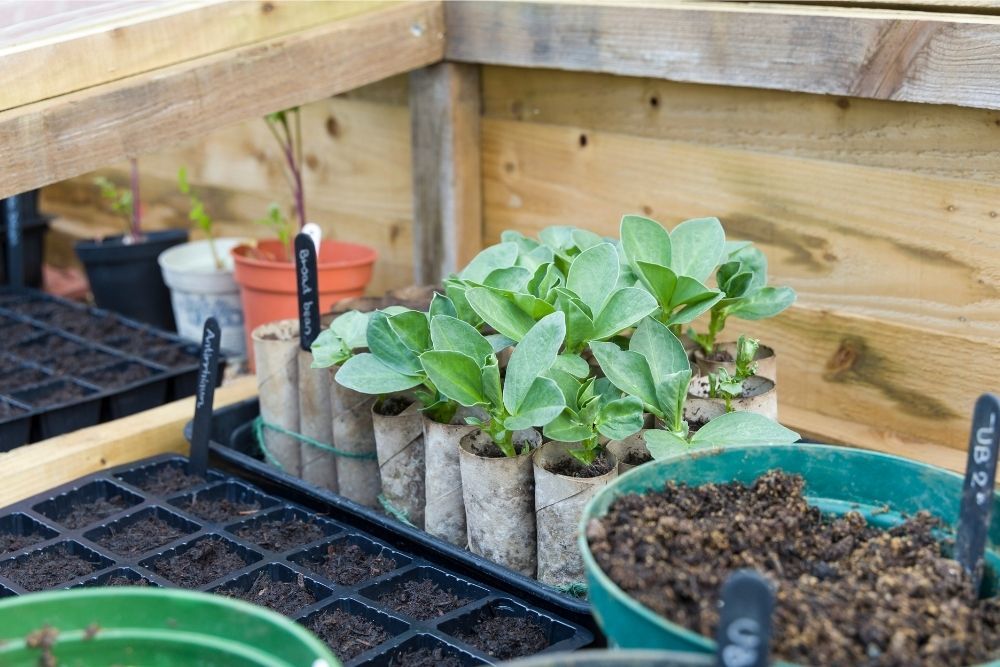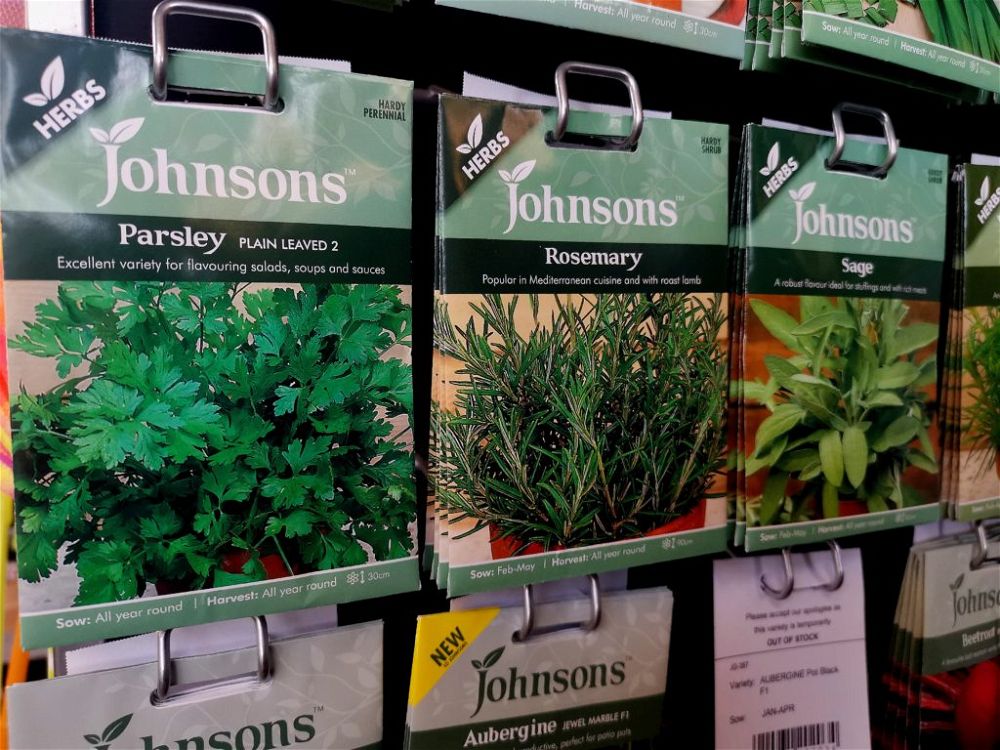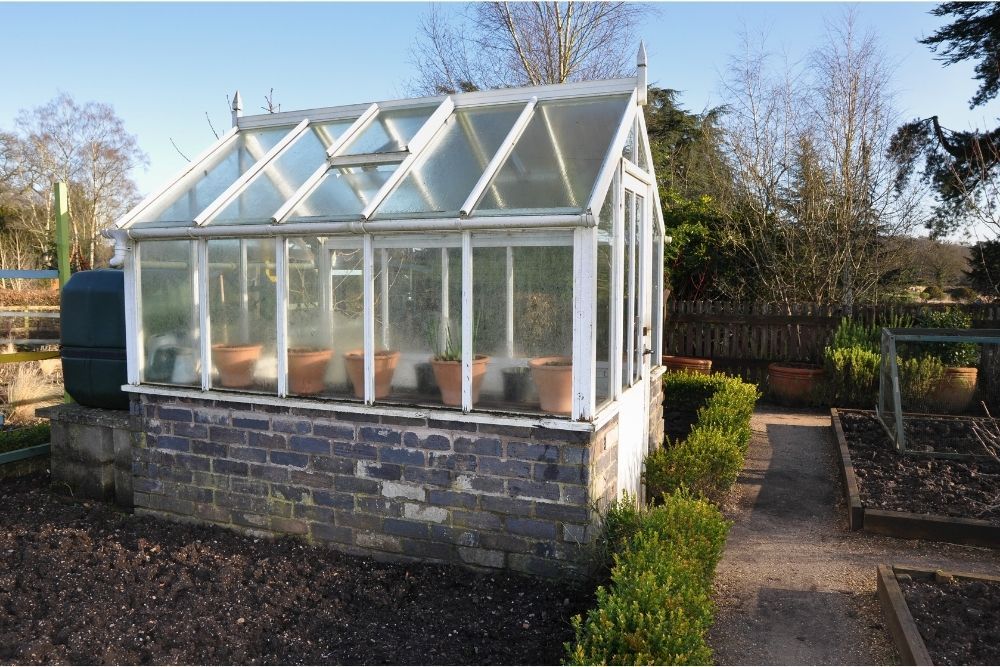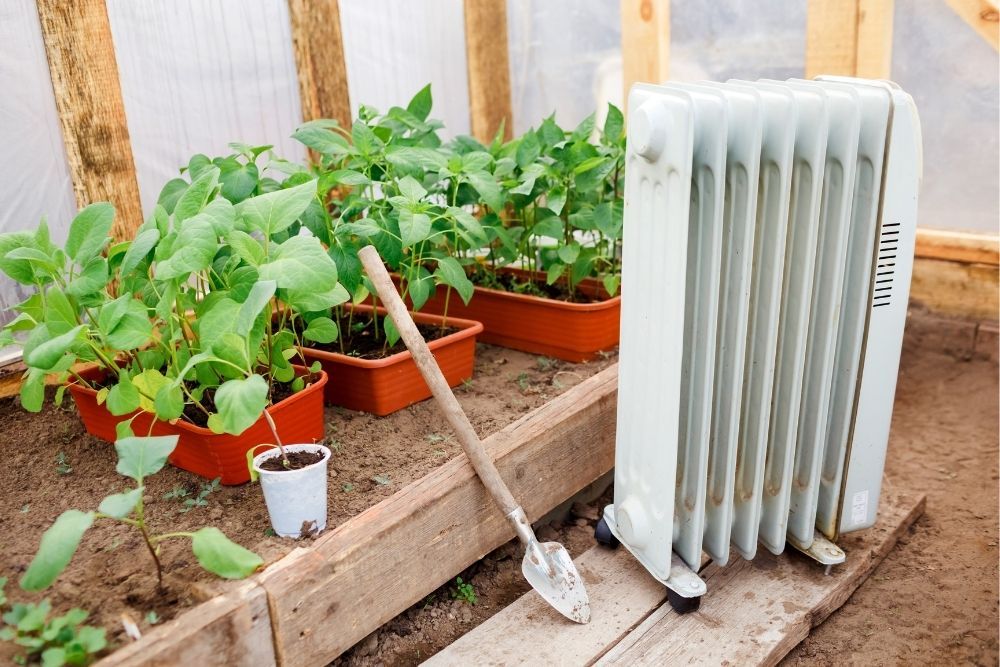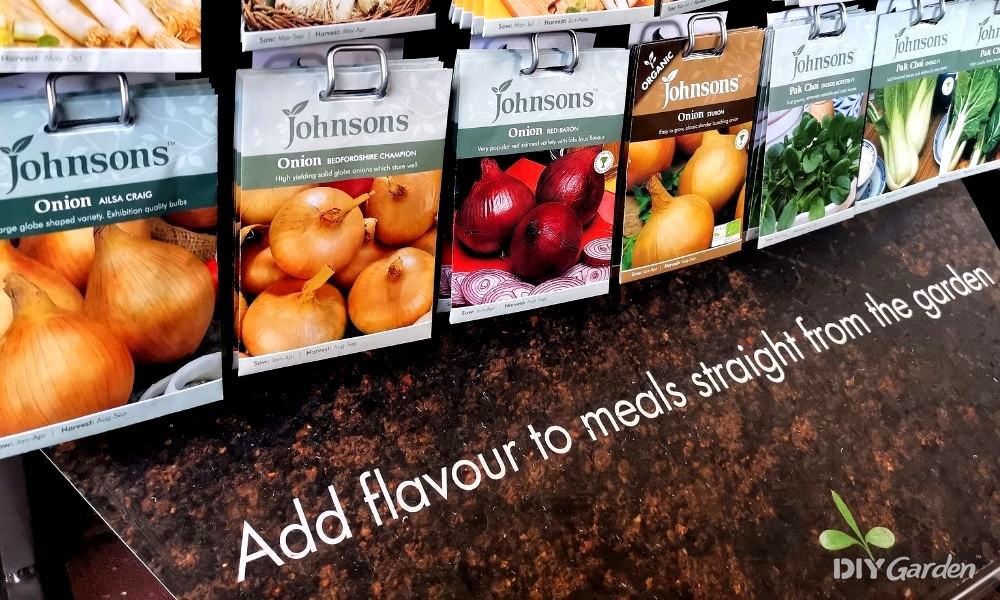
Come winter, your greenhouse can seem like a waste of space. But greenhouses can be useful in the colder months, too. But what can you grow? And where do you even begin?
Here, discover what to grow in a greenhouse in the winter and how to prep your greenhouse for the cold.
What to Grow in Your Greenhouse in Winter
Many people pack in gardening over the winter. Granted, you won’t get as much growth in the colder seasons, but there’s no reason to give it up altogether!
There are loads of mouth-watering winter greenhouse plants that thrive during the frosty winter months. Just take a look at the list below!
Potatoes
Potatoes are a must because they’re a staple in many wintry recipes, including soups, shepherd’s pie, bangers and mash, and hearty roast dinners.
Potatoes will grow well in a greenhouse in winter if planted in big buckets or grow bags. Potatoes planted in January should be ready and raring to go by March. Crops planted later on can be kept in the greenhouse to mature or transferred outside and harvested in April.
You’ll need to keep your greenhouse warm because potatoes hate frost! We’ll talk about ways to apply heat later on.
Carrots
Plant carrots in your greenhouse in autumn, and they’ll be ready at the first signs of frost. If you get an early thaw or two, check your carrots. You may have a batch that’s ready early!
Pick your carrot variety wisely, as some don’t handle the cold well. To be on the safe side, make sure you’re buying a type that’s cold hardy.
Kale
Unlike potatoes and carrots, kale doesn’t mind the cold. Some varieties can handle anything as cold as -6°c. If the temperature is even more extreme, you’ll need to think about purchasing a heat source.
Kale is an all-year-rounder. If you keep planting it, it keeps growing! It’s the cruciferous veg that just keeps coming. And why wouldn’t you want it all year? It contains vital antioxidants, vitamins, iron, fibre, and calcium, which tackle many health problems!
Broccoli & Cabbage
More from the cruciferous veg family, broccoli and cabbage. You’ll need to keep your greenhouse above 7°c at night for these ones. Somewhere between 7°c and 13°c is their sweet spot.
Sow your seeds in mid to late winter, and they’ll be ready to plant come spring. But maintain the right temperature, and you can grow these bad boys in your greenhouse right until harvest!
Spinach
Choose a cold-loving variety of spinach to ensure successful growth. Keep sowing batches throughout the winter, and you’ll have a constant supply across the cold months.
If they’re not growing as quickly as expected, add a little heat to your greenhouse. Sometimes, that’s all they need.
Beans
Beans are a low maintenance grower and impressive producer. Sowing beans in your greenhouse will guarantee an enormous harvest during winter.
If you’re looking for varieties, choose winter field growing beans. They can handle a frost, but make sure they’re in soil with good drainage and access to full sunlight.
Don’t feel limited to this variety; go and scout some out for yourself!
Brussel Sprouts
Brussel sprouts aren’t just for Christmas! Sowing brussel sprouts in winter means harvesting in March.
Quick tip, if you’re using brussels in your cooking, harvest brussel sprouts that are roughly the same size. Then you can be sure the cooking time will be the same. Otherwise, you’ll end up with some overcooked or some undercooked!
Lettuce
There are some lettuce varieties just perfect for the wintry cold. Little gem, lamb’s lettuce, and rocket are among these. But there’s loads of choice when it comes to cold-loving lettuce varieties, so take your pick!
To make sure you get a good supply, plant several varieties. They’ll grow and mature at different rates. That way, you can be sure you’ll definitely have enough to go around.
Pak Choi
Pak choi is a favourite oriental vegetable. It’s a fast grower that’s crammed with vitamins. It’s sure to keep you fit and healthy this winter! Pak choi can be sown even in October, ready for a delicious winter recipe.
Just give this green treat a month, and it’ll be good to go!
Herbs
Every gardener can acknowledge the versatility of herbs. Many hardy varieties will happily grow in your greenhouse this winter. Here’s a list of the main ones:
- Fennel
- Mint
- Oregano
- Parsley
- Rocket
- Chives
- Sage
- Rosemary
- Marjoram
- Lemon balm
- Thyme
- Coriander
And that’s not even all of them! Just check the packet of your favourite herbs. They’ll most likely be a great winter grower!
Garlic
Plant garlic in January, then transport it outside in March/April. Choosing a hard neck variety ensures it’ll survive even the coldest of conditions.
Onions
Many onion varieties can handle the cold, including spring onions and shallots. Some onion types don’t even need heat – just pot them up in your greenhouse and watch them flourish.
Prepping Your Greenhouse for Winter
Growing anything in winter is tricky. Your plants won’t succeed if they don’t have the right conditions. A dirty, cold greenhouse is not plant-friendly.
To prepare your greenhouse for winter:
- Clean it
- Insulate it
- Ventilate it
- Turn up the heat
Let’s take a look at these in more detail.
Clean It
Get rid of that icky algae, dirt, and mould lingering on the surfaces. This will encourage more light to seep into your greenhouse. And you know what more sunlight means! It’s not the best job, but it’ll guarantee better growth throughout the winter months.
Clean your greenhouse on one of the milder days when there’s no rain. First, remove your plants from the greenhouse. But remember to keep them under shelter! Then, get a broom or outdoor vacuum and get rid of anything on the floor.
Use disinfectant to thoroughly clean the structural elements of the greenhouse. Then, clean the glass of your greenhouse using a glass cleaner.
Insulate It
To be effective for winter growing, your greenhouse needs to keep in the heat. Horticultural bubble wrap is an excellent insulator. It’s cheap and will stop your plants from getting damaged from harmful UV rays.
Just insulate the end glass and roof. Otherwise, your greenhouse may become plagued with dampness. Other options include straw bales around the outside of your greenhouse or fabric covers. You can also wrap insulation around individual plant pots to keep the roots snuggly and warm!
Alternatively, use some form of heat source. Some options are discussed below!
Ventilate It
Your plants need carbon dioxide and oxygen as well as heat. Fussy, aren’t they? You need to maintain a suitable temperature while providing adequate ventilation. Ventilation will stop damp and mould creeping in and will prevent diseases and mildew.
Keep an eye out for a bright, sunny morning, and open up your greenhouse doors to let the oxygen and carbon dioxide stream in! Just make sure you close the doors before the sun goes down.
Turn Up the Heat
For a combination of heat and air circulation, choose an electric heater. Pick one with a thermostat so you can make sure your plants are getting the warmth they need.
Instead of spending on electricity, try passive solar plastic bottles. Just paint your plastic bottles black and fill them right to the top with water.
Place the bottles on shelves and walls. The paint will soak up the heat in the day, ready to be released during the night. This is a great, cheap way to keep the heat in.
If you’re focusing on the roots, try heat pads. Just place them near your pots, and they’ll send out a good amount of heat. Heat pads provide direct heat transfer and can be repositioned with no stress.
Ready, Set, Sow!
So you’ve learnt what vegetables to grow in a greenhouse in winter. You’ll be all stocked up on cruciferous veg like kale, cabbage, broccoli and spinach, and with your extensive yield, you’ll be full of beans. Your recipes will be sufficiently herby, and your roasts will sing with great spuds and glorious carrots.
But to grow these gems, make sure to clean, insulate, and ventilate your greenhouse. And when the temperature drops, turn up the heat!
